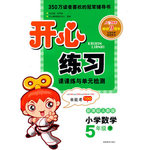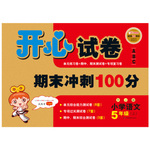题目内容
Traveling by train is usually not easy in China. It can be hard to get a ticket. When you’re traveling to the railway station, you look at your watch, for you are afraid you will miss your train.
But there is good news for people traveling between Beijing and Shanghai. Construction (建设) on the express railway (高速铁路) between the two cities started just before the Spring Festival of 2008. When it is finished by 2013, taking a train will be as easy as taking a bus.
“There will be trains every several minutes. Buying a ticket, getting through the checkpoint (检查站) and taking your seat, will take just 10 minutes,” said an engineer.
There may be high-speed trains running at 350 kilometers an hour. The travel time between the two cities will decrease from 10 to about 5 hours. The trains will carry twice the present number of passengers.
The new line will be 1,318 kilometers long and go across specially built bridges. It will run along side the present line. There will be 21 stations in Hebei, Tianjin, Shandong, Anhui and Jiangsu.
“The cost of traveling by the express railway may be around 800 yuan. That will be more expensive than an ordinary train, but cheaper than by air.” Said Zhang Xiaoling, a Jiangsu government official.
According to Zhang, the higher price is caused by the large cost of the railway project. At about 200 billion yuan, the project may be even more expensive than the Three Gorges Project (三峡工程).
1.The express railway between Beijing and Shanghai will be finished _______.
A. at the end of this year????????????? ????????????? ????????????? ????????????? ????????????? B. before the Spring Festival of 2008
C. by 2013????????????? ????????????? ????????????? ????????????? ????????????? ????????????? ????????????? D. in about 5 years
2.Before taking your seat, you should _____ with your ticket.
A. buy a ticket????????????? ????????????? ????????????? ????????????? ????????????? ????????????? ????????????? B. get through the checkpoint
C. pack your things????????????? ????????????? ????????????? ????????????? ????????????? ????????????? D. make some friends
3.The word “decrease” in the passage possibly means ______ in Chinese.
A. 延长????????????? ????????????? ????????????? ????????????? B. 缩短????????????? ????????????? ????????????? C. 提速????????????? ????????????? ????????????? ????????????? D. 限速
4.Which of the following statements is TRUE according to the passage?
A. Traveling by train is usually difficult in China because tickets are too expensive.
B. The high-speed trains will have 21 stations in Shanghai, Shandong, Hunan and Jiangsu.
C. Tickets for the high-speed trains will be cheaper than those for planes.
D. The cost of the express railway project is as high as that of the Three Gorges Project.
5.What can be the best title of the passage?
A. An enormous project.
B. Train tickets will get more expensive
C. Specially built bridges
D. Beijing—Shanghai express railway
1.C
2.B
3.B
4.C
5.D
【解析】
试题分析:本文主要报道的是北京——上海的高速铁路在2008年春节前开始动工,将于2013年完工。乘坐高速铁路很方便,乘坐之前先买票,再通过安检,然后坐上座位,只需10分钟。这条高速铁路长1318千米,沿途21个站,列车时速350千米,比原来乘坐火车的时间减少5个小时,容纳的乘客是过去的两倍。票价比火车贵,比飞机便宜。
1.细节理解题。根据When it is finished by 2013,可知北京至上海的高速铁路将到2013年完工。故选C。
2.细节理解题。根据Buying a ticket, getting through the checkpoint (检查站) and taking your seat, will take just 10 minutes,可知乘坐高速铁路之前先买票,在通过安检,然后坐上座位,只需10分钟。故选B。
3.词义猜测题。根据from 10 to about 5 hours.可知时间有10小时到5小时,这是在缩短时间。故选B。
4.细节理解题。根据That will be more expensive than an ordinary train, but cheaper than by air.可知乘坐高速铁路别坐飞机要便宜。故选C。
5.标题归纳题。根据But there is good news for people traveling between Beijing and Shanghai.可知本文主要将的是北京——上海的高速铁路。故选D。
考点:新闻报道类短文阅读。

 开心练习课课练与单元检测系列答案
开心练习课课练与单元检测系列答案 开心试卷期末冲刺100分系列答案
开心试卷期末冲刺100分系列答案
Some advice on travel
Here is some advice on travel. I think it will be helpful to you.
1. Forget fashion! Always wear your most comfortable clothes and shoes when you go on long trips.
2. If you're going somewhere cold, remember to take your warm clothes with you.
3. If you are going somewhere sunny, remember to take some sun block(防晒霜) and sunglasses.
4. Traveling on trains and buses can be boring, so you'd better take an MP4 player.
5. Always take a camera with you to capture those special moments.
6. Be careful with your things whenever you go to crowded places, like a train station.
7. Always leave room in your bag for souvenirs(纪念品).
8. Tour buses often stop at expensive shops along the way. Save your money by buying souvenirs at local shops.
9. Most countries have lower prices for students, so if you are, take your student card with you.
10. If you travel abroad, remember to take your passport.
【小题1】 How many suggestions are about clothes?
A. One. B Two. C. Three. D. Five.
【小题2】 According to the passage, ________ is a good way to keep away from being bored while you are on a train or a bus.
| A.taking some photos | B.listening to music |
| C.reading a book | D.sleeping for a while |
| A.拍摄 | B.感觉 | C.冲洗 | D.控制 |
| A.stay with others | B.look after your things | C.stop visiting | D.go slowly |
| A.students | B.policemen | C.old people | D.children |

Singapore’s public transport system (公共交通系统) is one of the best in the world, so you should have no problem finding your way around like a local (当地人). There are three main forms of public transport that you would find in any other major city—trains, buses and taxis.
TRAINS
Trains run from 6 a.m. to midnight. Single trip tickets start at 80 cents. If you buy an EZ-Link card for $15, you can ride the trains and buses all you like.
If you need more information, just call Transit Link on 1800 767 4333.
BUSES
There are several bus services in Singapore and fares (车费) start at 80 cents. Be sure to always ask the driver the cost of your ticket as he can not give changes.
If you need help, just call Transit Link on 1800 767 4333.
TAXIS
There are three main taxi companies—City Cab (6552 2222), Comfort (6552 1111) and Tibs (6552 8888). Booking (预订) can also be made easily by calling the numbers listed above.
RENTAL (租) CARS
Driving in Singapore is a pleasure and if you like to travel at your own pace, renting a car is a good choice. Renting takes away the trouble of getting to places around Singapore. Just sit back and enjoy the city. It also means you’ll get to see a lot more that a train or a bus won’t let you see.
For car rental, call Avis on +65 6737 1668.
【小题1】If you need to find the bus number, you may call____________.
| A.+65 6737 1668 | B.6552 8888 |
| C.1800 767 4333 | D.6552 2222 |
| A.both buses and trains | B.only trains |
| C.both buses and taxis | D.only rental cars |
| A.take your own license with you | B.ask the driver how much your ticket is |
| C.buy the bus map of Singapore | D.book your ticket ahead of time |
| A.A local has no trouble finding his way around. |
| B.It’s much cheaper to go around by bus than by train. |
| C.You can see a lot more in Singapore only by renting a car. |
| D.It’s very convenient(方便的) for visitors to travel in Singapore. |
Everyone knows that there’s not enough land in Hong Kong.If you go there by air, you will land at Kai Tak Airport. It was built out into the sea. It is in the part of Hong Kong called Kowloon. Kowloon is one of the two big islands in Hong Kong.
The other island is Hong Kong itself. You can get there by ship or through a tunnel(隧道) under the sea.
The population of Hong Kong is more than six million. Chinese and English are spoken by many people there. Clothes, computers, radios, televisions are made in Hong Kong. It is a shopping center. You can buy all kinds of things there.
Hong Kong is also a beautiful city. It’s a good place for traveling. People from all over the world visit Hong Kong every year. You can watch dog-racing and motor-racing there. When you are hot and tired, you may rest in the small cool gardens. There are also a lot of tall buildings with comfortable rooms to live in. If you enjoy eating out, you can easily find a good place for delicious food.Foods of different flavors(风味) are served in Hong Kong.
【小题1】Where was Kai Tak Airport built?
| A.It was built out into the sea. | B.It was built out into the lake. |
| C.It was built out into the river | D.It was built out into the pool. |
| A.Nearly 6 million. | B.Less than 6 million. |
| C.Over 6 million. | D.Only 6 million. |
| A.7. | B.6. | C.5. | D.4. |
| A.Kai Tak Airport is in Kowloon. |
| B.There's a lot of land in Hong Kong. |
| C.Many people in Hong Kong speak Chinese and English |
| D.Hong Kong is a beautiful city for traveling |
| A.Hong Kong is a big city with a large population |
| B.there are almost no factories in Hong Kong |
| C.few people visit Hong Kong ever year |
| D.visitors can enjoy the comfortable living rooms and delicious foods in Hong Kong |
New York is a very large city with 8 million people. How do so many people move about the city on their way to work and school? So, we should know something about its transportation.
In New York you can travel about the city by subway, bus, taxi and car. The subway runs on the railroad lines under the city. It crosses the city at different points and goes all parts of the city. Traveling by subway is the fastest way to get around the city.
The second way to travel around the city is by public bus. It’s a slower way to travel. This is because the bus moves in road traffic which is often heavy.
You can also travel around the city by taxi. This is the most expensive way, but the taxi will take you to the very place you wish to go to. If traffic is heavy, the taxi will be slow. During the mornings and afternoons, this is the “rush hour”. This is the time when the traffic is very heavy with people going to and from work.
The last way to get around New York is using your own car. However(但是), it’s not easy for you to drive, especially(尤其是)when you are driving in the “rush hour”. If there is an accident(交通事故)on the road, you will have to wait for a long time.
The best time to travel around the city is from 9am to 4 pm. This is the time after the morning “rush hour” and before the evening “rush hour”. Traffic will be less crowded because most people are already at school or at work.
【小题1】 This passage is mainly(主要)about _____.
| A.the weather of New York |
| B.the transportation of New York |
| C.the people in New York |
| D.traffic accidents in New York |
| A.subway | B.taxi | C.bus | D.car |
| A.subway | B.taxi | C.bus | D.car |
| A.From 8am to 10 am | B.From 3am to 10 pm |
| C.From 3 am to 5 pm | D.From 10 am to 3pm |
